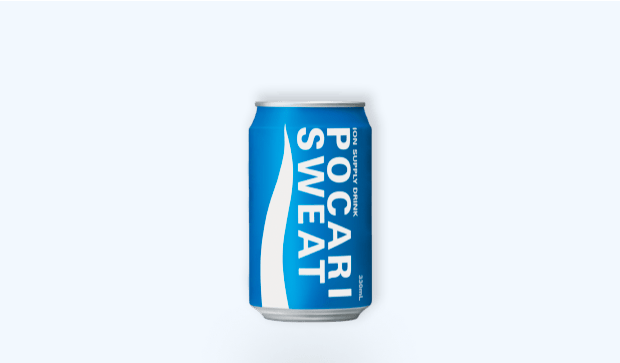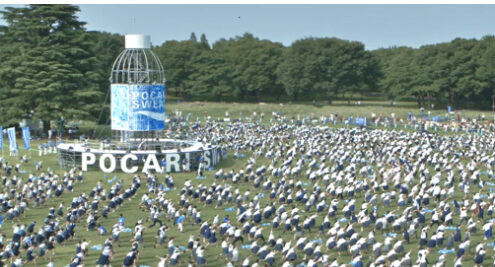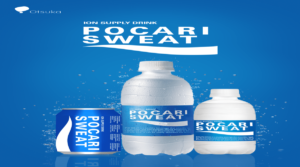High-Intensity Interval Training, or HIIT, combines short bursts of intense exercise with recovery periods, offering a highly efficient and effective regimen that fits seamlessly into busy schedules.
The potent blend of time efficiency and remarkable results has garnered its fame. Imagine achieving the benefits of a long jog in a quick 15-minute session thrice a week. Intriguing, isn’t it?
This blog post is your gateway to understanding HIIT, its benefits, and ways to integrate it into your workout routine. Whether you’re a beginner embarking on your fitness journey or a seasoned athlete looking to switch things up, our guide to HIIT is for you.
Benefits of High-Intensity Interval Training
A. Improved Cardiovascular Fitness
HIIT is one of the cardiovascular exercises that can boost your heart health. Those intense bursts of exercise train your heart to work more efficiently, strengthening it like any other muscle.
B. Increased Calorie Burn and Fat Loss
HIIT stands out in its ability to help you burn calories and shed fat. The high-intensity segments of the workout push your body into the anaerobic zone, triggering a higher calorie burn during and after the workout.
C. Time Efficiency
Let’s face it – we’re all time-crunched. That’s why HIIT is a crowd-pleaser. A mere 15-minute session can yield benefits comparable to, or even better than, a traditional hour-long lower-intensity workout.
D. Metabolic Benefits and Increased Post-Exercise Calorie Burn
HIIT can rev up your metabolism, leading to an increased calorie burn even after your workout ends, thanks to the phenomenon known as ‘Excess Post-Exercise Oxygen Consumption’ (EPOC). This means your body continues to burn calories at a higher rate long after you’ve finished your last set.
E. Improved Insulin Sensitivity and Glucose Regulation
By including HIIT in your workout routine, you could also see improvements in insulin sensitivity and better glucose regulation. This is great news for people looking to manage their blood sugar levels more effectively.
F. Enhanced Endurance and Performance
Not only does HIIT enhance your cardiovascular health, but it also boosts your overall endurance and performance. This means you can go longer and harder in whatever sport or physical activity you love.
How High-Intensity Interval Training Works
HIIT operates on a simple yet efficient interval structure: alternate between high-intensity workout periods and recovery (or lower-intensity) periods. This might look like sprinting for 30 seconds, then walking for a minute, and repeating this cycle for 15-30 minutes.
The beauty of HIIT lies in its back-and-forth between intense exertion and recovery. The high-intensity segments push your body to its limits, elevating your heart rate and pushing your body into the anaerobic zone. The recovery periods, on the other hand, allow your body to catch its breath, lowering your heart rate and bringing your body back into the aerobic zone.
HIIT is designed to get your heart rate up and keep it there. During the high-intensity phase, your heart rate climbs, pushing your body to use more oxygen.
Sample High-Intensity Interval Training Exercises
HIIT exercises can be versatile, involving a variety of movements to keep your workout fun and engaging. Here are some exercises you can incorporate into your HIIT routine:
A. Cardio-based HIIT Exercises
- Sprint Intervals: Alternate between 30 seconds of full-effort sprints and 1 minute of slower-paced jogging or walking.
- Jumping Jacks: Get that heart rate soaring with 30 seconds of vigorous jumping jacks, then recover with 30 seconds of rest.
- Burpees: Nothing says HIIT quite like burpees. Try 20 seconds of burpees with 10 seconds of rest.
B. Strength-based HIIT Exercises
- Squat Jumps: Perform squat jumps for 30 seconds, followed by 30 seconds of rest.
- Push-up Variations: Try 30 seconds of push-ups (choose a variation that suits your fitness level), then take a 30-second breather.
- Mountain Climbers: Go for 20 seconds of mountain climbers and 10 seconds of rest.
C. Plyometric HIIT Exercises
- Box Jumps: Do 30 seconds of box jumps, followed by 30 seconds of rest.
- Lateral Bounds: Complete 20 seconds of lateral bounds and then rest for 10 seconds.
- Skater Jumps: Challenge yourself with 30 seconds of skater jumps, then recover for 30 seconds.
D. Equipment-based HIIT Exercises
- Kettlebell Swings: Swings for 30 seconds, rest for 30 seconds.
- Battle Ropes: Go hard on the ropes for 30 seconds, then recover for 30 seconds.
- Medicine Ball Slams: Slam for 20 seconds, recover for 10 seconds.
Designing a High-Intensity Interval Training Workout
A workout tailored to your goals and fitness level can boost your progress and keep you motivated. Here’s how to design your HIIT workout:
- Set Goals and Determining Fitness Level: Understand what you aim to achieve with your HIIT routine and assess your current fitness level. This is crucial for selecting suitable exercises and work-to-rest ratios.
- Choose the Types of Exercises That Target Major Muscle Groups: Opt for movements that engage multiple large muscle groups for overall strength and endurance development.
- Establish Work-to-Rest Ratios and Interval Lengths: Beginners might start with a 1:2 work-to-rest ratio, such as 30 seconds of work and 60 seconds of rest. As you get fitter, you can adjust this ratio.
- Structure a Workout Plan and Progression: Structure your workout to include a variety of movements. Start with fewer high-intensity intervals and gradually increase them as your fitness improves.
- Incorporate Warm-Up and Cool-Down Routines: Never skip the warm-up and cool-down sessions. They prepare your body for intense work and help it recover post-workout, reducing injury risk.
Common Mistakes to Avoid in High-Intensity Interval Training
While HIIT can be an effective and efficient way to get in shape, avoiding some common pitfalls is crucial. Here are a few key mistakes to steer clear of:
A. Neglecting Proper Warm-Up and Cool-Down
Warming up and cooling down are essential parts of any workout routine, including HIIT. They prepare your body for the exercise and help it recover afterwards, reducing the risk of injury and muscle soreness.
B. Starting with Excessive Intensity or Volume
While HIIT is about high intensity, starting at a pace that suits your fitness level is important. Trying to do too much too soon could lead to injuries or burnout. Gradually increase the intensity and duration of your workouts as your fitness improves.
C. Not Focusing on Form and Sacrificing Quality for Quantity
With HIIT, quality trumps quantity. Focus on performing each exercise with good form rather than trying to fit in as many reps as possible. Proper form helps prevent injuries and ensures you’re getting the most out of each exercise.
D. Ignoring Rest and Recovery
Rest and recovery are just as important as the workouts themselves. Skipping recovery periods can hinder your performance and progress. Plus, rest days are essential for muscle repair and growth.
E. Overlooking the Importance of Proper Nutrition and Hydration
What you eat and drink greatly impacts your performance and recovery. Ensure you’re properly hydrated before, during, and after your workouts. Also, aim to consume a balanced diet rich in proteins, carbs, and healthy fats to fuel your workouts and aid recovery.
HIIT for Different Fitness Levels
HIIT workouts can be tailored to suit any fitness level. Here are some recommendations:
A. Beginner-Friendly Modifications and Alternatives
If you’re new to HIIT, start with simpler exercises and longer rest periods. For instance, if burpees seem too challenging, try step-backs instead. Similarly, you might start with a 1:2 work-to-rest ratio.
B. Intermediate-Level HIIT Workouts
As your fitness improves, you can increase the intensity and duration of your workouts. Consider shortening the rest periods or adding more challenging exercises, like squat jumps or mountain climbers.
C. Advanced HIIT Variations
For advanced trainees, try incorporating more complex movements, like kettlebell swings or medicine ball slams. You might also experiment with shorter rest periods and longer high-intensity intervals.
How to Stay Hydrated During HIIT
Staying well-hydrated is a cornerstone of any effective fitness routine, and HIIT is no exception. Here’s how to stay optimally hydrated:
- Before Your Workout: Aim to drink water throughout the day, not just right before your workout. Your urine should be light yellow, typically indicating good hydration.
- During Your Workout: Depending on the duration and intensity of your workout, you might need to take small sips of water to stay hydrated.
- After Your Workout: It’s crucial to replenish any fluid lost during your workout. This is where drinks like Pocari Sweat can be beneficial.
Intense workouts like HIIT can lead to significant sweating, which means water and important ions (like sodium and potassium) are lost. These ions play a key role in many bodily functions, including muscle function and water balance.
Drinks like Pocari Sweat are designed to rehydrate you and replenish these lost ions. Containing a balance of electrolytes close to the human body’s natural composition, Pocari Sweat can help you stay hydrated and restore the essential ions lost during your HIIT workout.
Remember, hydration is about quenching your thirst and ensuring your body functions optimally during your workouts and beyond. So, keep that water bottle (or Pocari Sweat) close by during your HIIT sessions!
Conclusion
Embracing a new workout regime can seem daunting, but the multifaceted benefits of HIIT make it worth the effort. From improved cardiovascular health to efficient fat loss, HIIT offers a time-effective way to reach your fitness goals.
Give HIIT a shot and tailor it to your fitness level and goals. Start slow, maintain proper form, and don’t forget to hydrate! The journey may be challenging, but the rewards are significant.





















